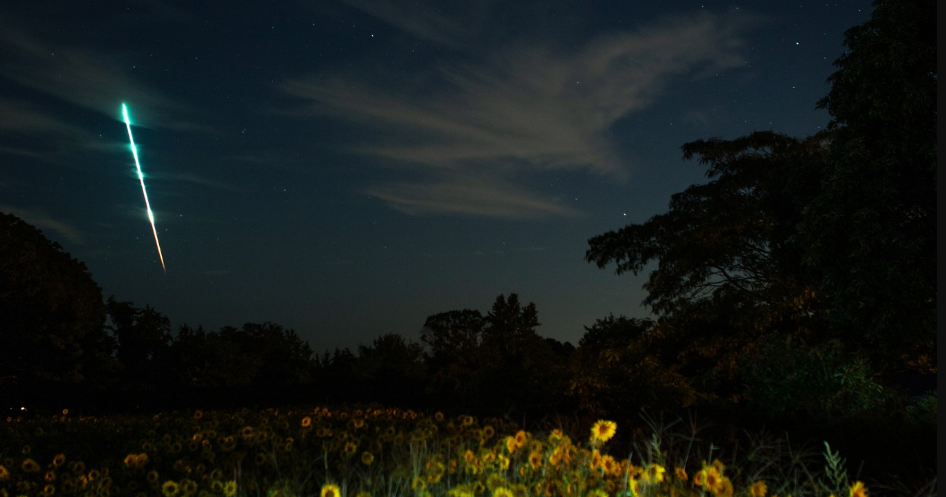Hundreds watched in awe Sunday night as a fireball streaked across the mid-Atlantic.
The fireball, which was an exceptionally bright meteor, first became visible 47 miles above the Maryland town of Forest Hill, according to NASA. It sped northwest at 36,000 miles per hour and disintegrated at an altitude of 22 miles above the Gnatstown in Pennsylvania.
The fireball was as bright as a quarter moon and moved 55 miles through the atmosphere, NASA said on its Meteor Watch page on Monday. By studying the orbit and trajectory, scientists determined the object producing the meteor was a small fragment of an asteroid, which may have originated in the Asteroid Belt between Mars and Jupiter.
Werner Tedesco
What’s the difference between a fireball, a meteor and an asteroid?
A fireball, also known as a boldie, is an astronomical term for a bright meteor that’s “spectacular enough to be seen over a very wide area,” according to NASA. Fireballs that explode in the atmosphere are usually called boldies, though the two terms are used interchangeably.
Meteoroids can be thought of as space rocks, according to NASA. They range in size from dust grains to small asteroids. They become meteors as they enter Earth’s atmosphere (or that of another planet) and burn up.
If a meteoroid survives a trip through the atmosphere and hits the ground, it’s known as a meteorite.
Asteroids are small, rocky objects usually found in a ring between the orbit of Mars and Jupiter called the asteroid belt.
How many people saw the fireball?
More than 400 people reported seeing the fireball, according to the American Meteor Society. The sightings came in from Connecticut, Delaware, Maryland, North Carolina, New Jersey, New York, Pennsylvania, Rhode Island, Virginia, Vermont and West Virginia. Residents of Washington, D.C., also spotted the fireball.
The organization says reporting fireballs alerts them to “potentially scientifically significant events that occur, and contributes to the general database of knowledge about meteors.”
What’s next for astronomy fans?
NASA notes that Venus returns to the morning sky this month. It may be visible in the eastern sky before sunrise throughout the month. According to the space agency, Venus will appear fairly high in the sky from the Northern Hemisphere.
The full moon on Sept. 28, known as the Harvest Moon, will also be the last of the four consecutive supermoons this year. It will appear after sunset on Sept. 28 and reach its peak on Sept. 29.
Supermoons appear about 16% brighter than an average moon. They also appear bigger than the average full moon. According to NASA, it’s similar to the size difference between a quarter and a nickel. The phenomenon occurs when the moon’s orbit is closest to Earth at the same time the moon is full.
Denial of responsibility! My Droll is an automatic aggregator of Global media. In each content, the hyperlink to the primary source is specified. All trademarks belong to their rightful owners, and all materials to their authors. For any complaint, please reach us at – [email protected]. We will take necessary action within 24 hours.


